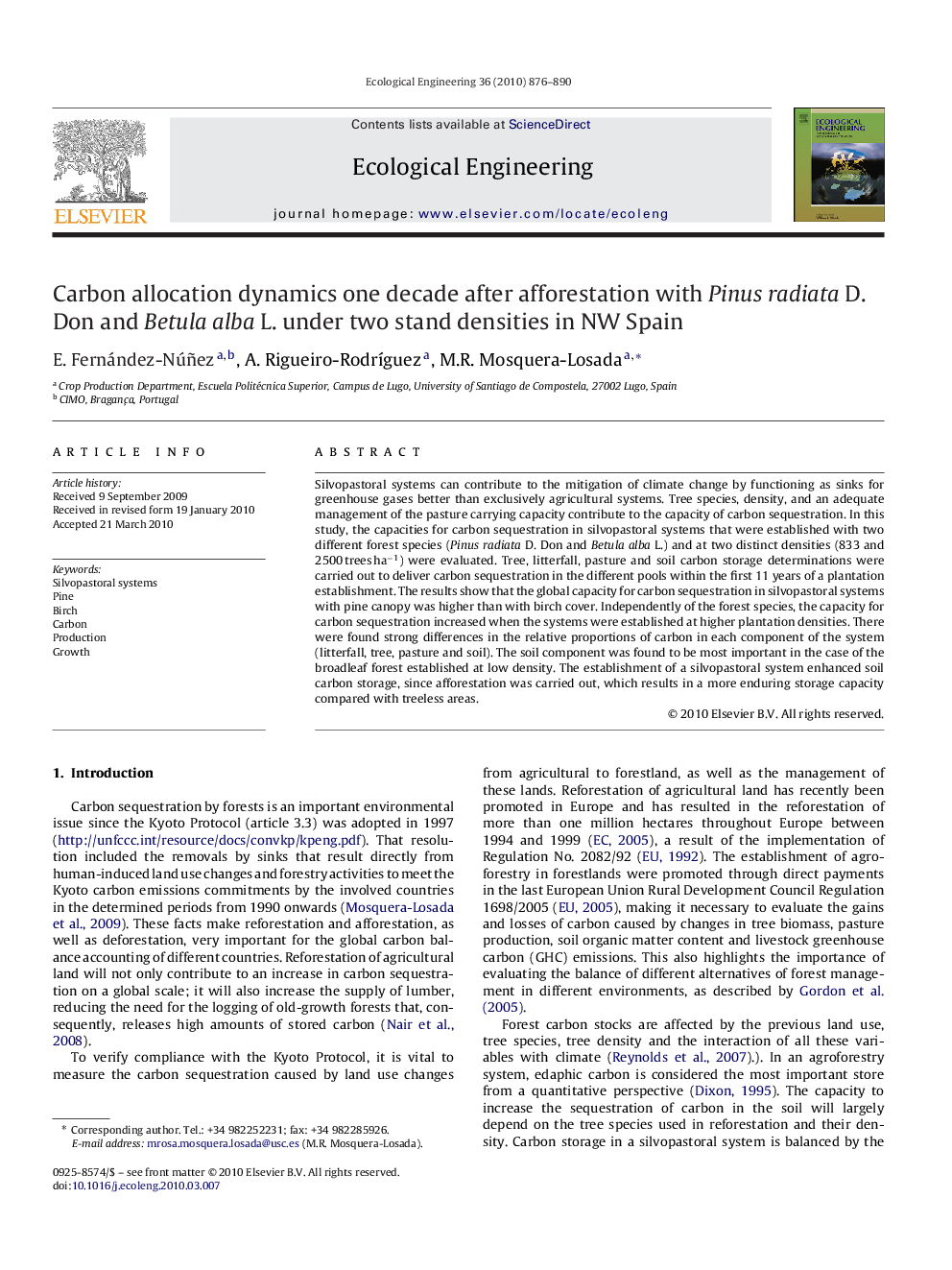| Article ID | Journal | Published Year | Pages | File Type |
|---|---|---|---|---|
| 4390439 | Ecological Engineering | 2010 | 15 Pages |
Silvopastoral systems can contribute to the mitigation of climate change by functioning as sinks for greenhouse gases better than exclusively agricultural systems. Tree species, density, and an adequate management of the pasture carrying capacity contribute to the capacity of carbon sequestration. In this study, the capacities for carbon sequestration in silvopastoral systems that were established with two different forest species (Pinus radiata D. Don and Betula alba L.) and at two distinct densities (833 and 2500 trees ha−1) were evaluated. Tree, litterfall, pasture and soil carbon storage determinations were carried out to deliver carbon sequestration in the different pools within the first 11 years of a plantation establishment. The results show that the global capacity for carbon sequestration in silvopastoral systems with pine canopy was higher than with birch cover. Independently of the forest species, the capacity for carbon sequestration increased when the systems were established at higher plantation densities. There were found strong differences in the relative proportions of carbon in each component of the system (litterfall, tree, pasture and soil). The soil component was found to be most important in the case of the broadleaf forest established at low density. The establishment of a silvopastoral system enhanced soil carbon storage, since afforestation was carried out, which results in a more enduring storage capacity compared with treeless areas.
